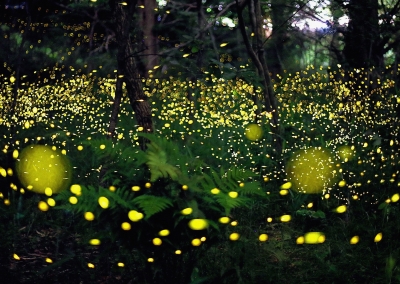
Fireflies are winged beetles with light-producing organs called photic organs located in the lower part of their abdomen Bioluminescence in fireflies serves several purposes – to attract mates, to lure prey and in larvae, the light serves as a warning to predators not to eat them because they contain distasteful toxic chemicals. Firefly light is usually to each species. Some fireflies are capable of synchronising their light emission in a phenomenon known as simultaneous bioluminescence.
This phenomenon has been observed only in a few places such as the Great Smoky Mountains National Park in Tennessee, the U.S, and in the mangrove forests of Southeast Asia.
Fireflies appear to light up for a variety of reasons. The larvae produce short glows and are primarily active at night, even though many species are subterranean or semi-aquatic. Fireflies produce defensive steroids in their bodies that make them unpalatable to predators. Larvae use their glows as warning displays to communicate their distastefulness. As adults, many fireflies have flash patterns unique to their species and use them to identify other members of their species as well as to discriminate between members of the opposite sex. Several studies have shown that female fireflies choose mates depending upon specific male flash pattern characteristics. Higher male flash rates, as well as increased flash intensity, have been shown to be more attractive to females in two different firefly species.
Picture Credit : Google

